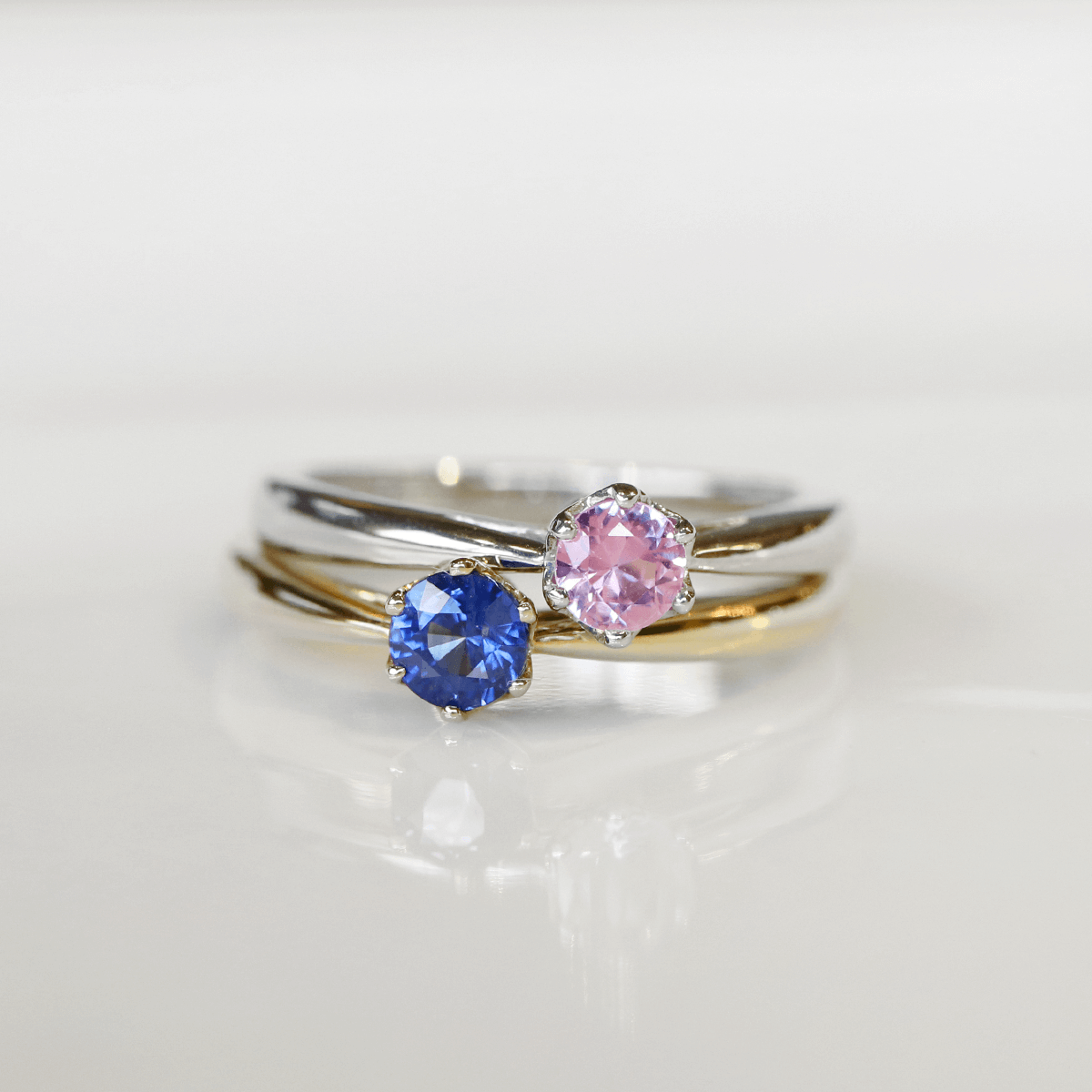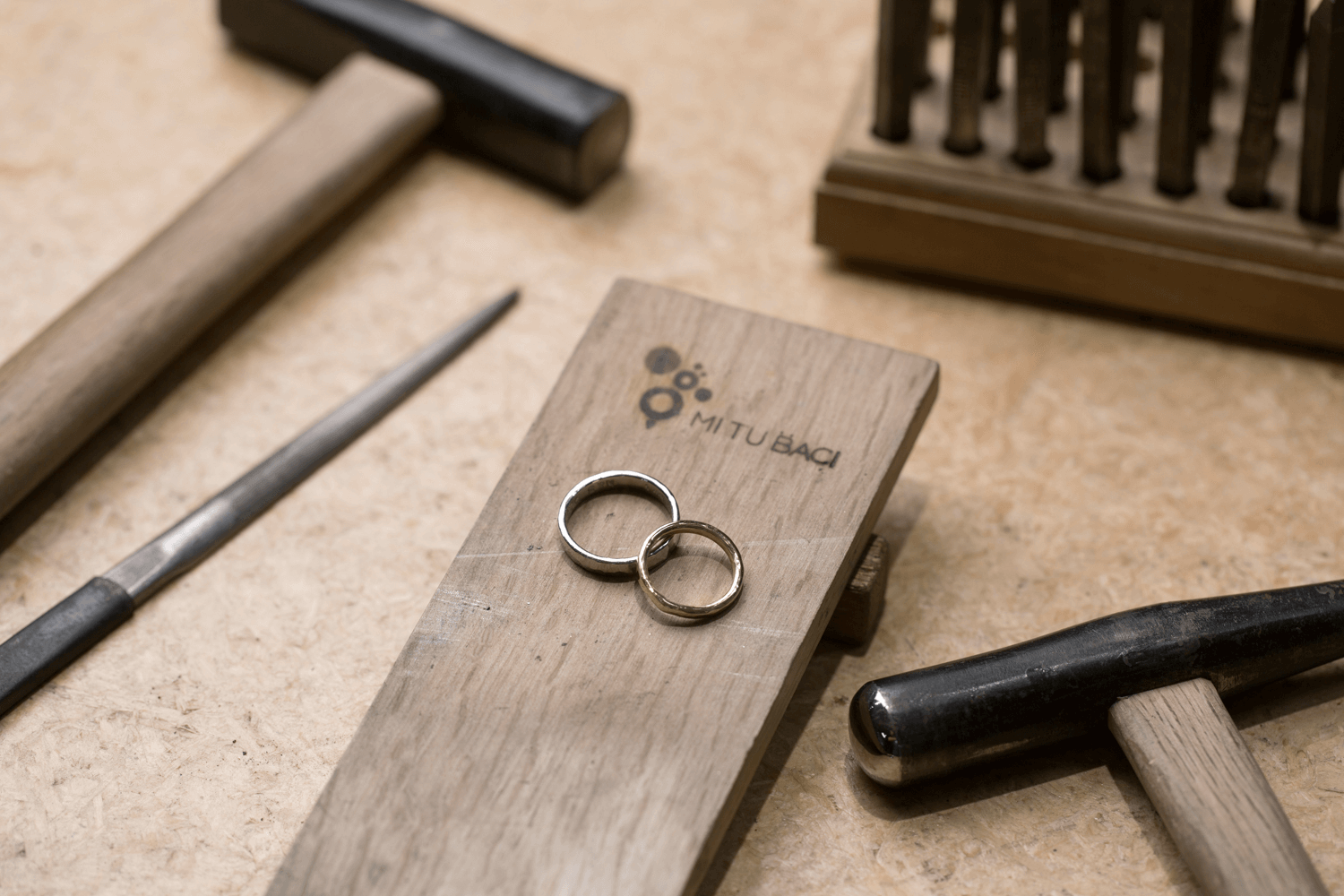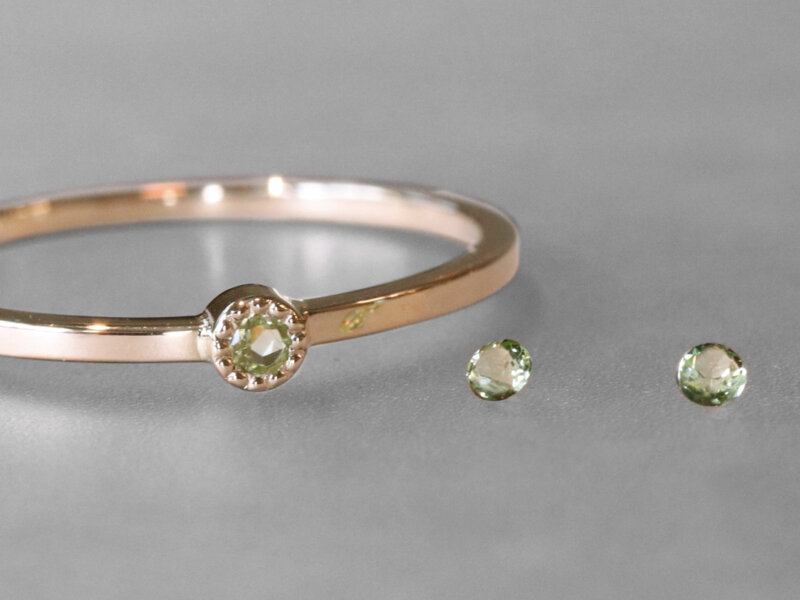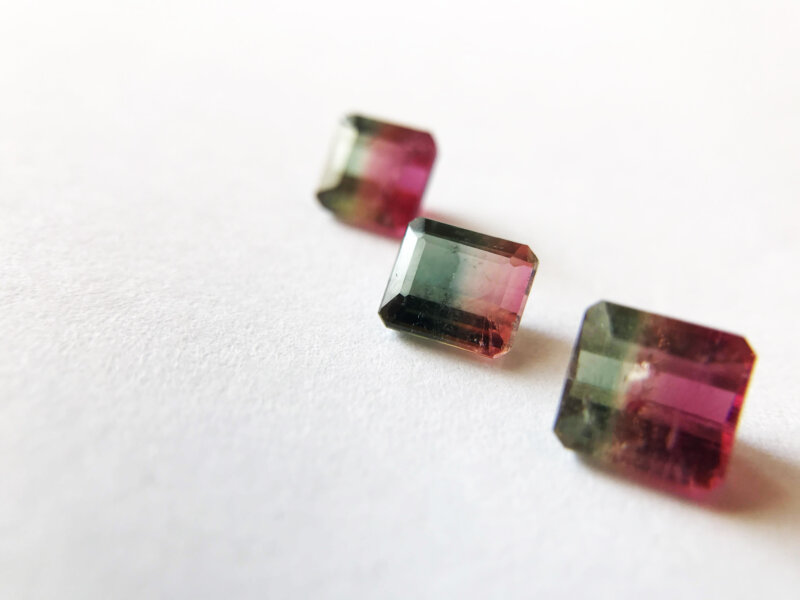September's birthstone is sapphire.
I would like to talk about sapphires.
Sapphire is the birthstone for September, the same as iolite.
Its Japanese name is Seigyoku, meaning "blue gem." It has a Mohs hardness of 9, with no wall sharpness, and a toughness of 8, surpassing diamonds, which have a toughness of 7.5.
This is a colored gemstone suitable for jewelry not only for its beautiful coloring but also for its traditional and strong nature, which was loved by European royalty.
The name "sapphire" comes from the Latin word "sapphirus," meaning blue. It is arguably the most well-known of all blue stones.
Typical colors are greenish blue to blue to purplish blue and dark blue in circulation.
Among these, sapphires that are generally considered to be of high quality are those with a strong color and high transparency, with blue to violet tones. Sapphires with strong color but low transparency may lose their brilliance in dark light sources, so it is better to compare them in the shade to confirm their quality.
Among blue sapphires, there are two main types of highly regarded colors. The most beautiful and highly regarded color is "cornflower (cornflower) blue. The next most highly rated color is "royal blue. The two are different in color, partly due to their origin. The Royal Blue sapphire has a strong, crisp blue color, while the Cornflower Blue sapphire has a gentle, elegant color with a hint of white, as if covered with a veil of white.
Multicolored sapphires
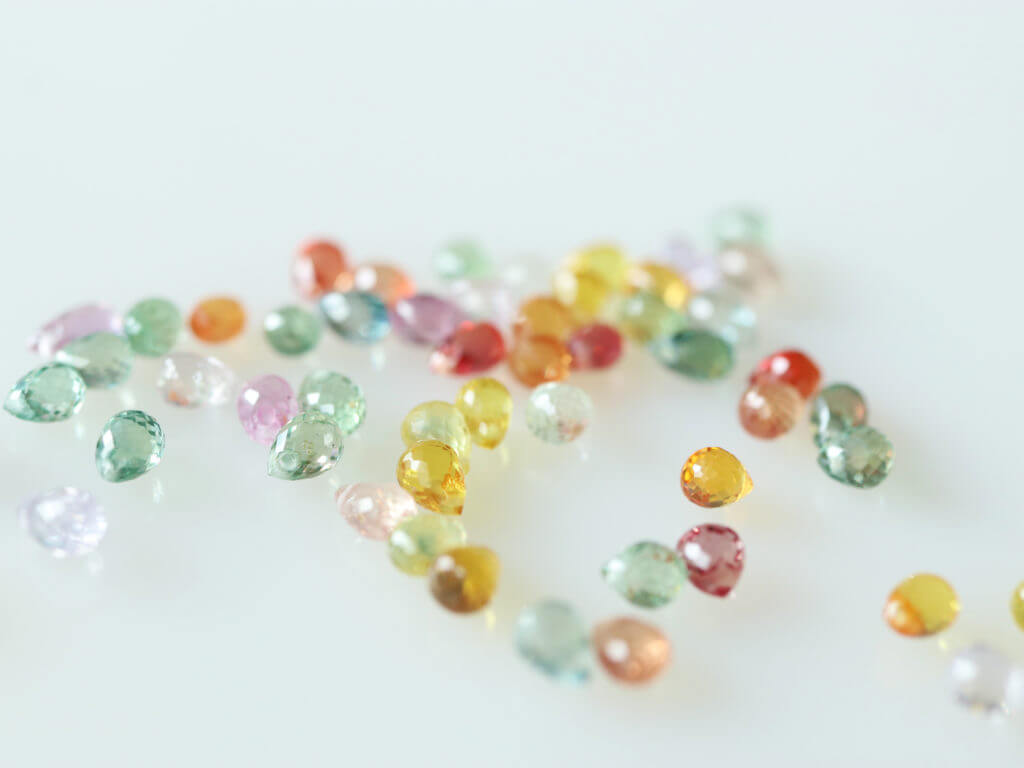
Sapphire is commonly thought of as a name for a blue gemstone, but it is also known as a stone with many different color variations. Violet, green, yellow, orange, pink, purple, and many other colors exist, and sapphires other than red and blue are also called "colored sapphires (also known as fancy sapphires).
The most highly regarded non-blue sapphire is the Sri Lankan "Papalachia sapphire," which is commonly known as a pink-orange color. The name comes from the Sri Lankan Sinhala word meaning "lotus flower. High-quality papalachian sapphires have an attractive transparency and a deep orange hue that is not found in other pink stones.
I would like to go into more detail about sapphire as an ore.
Sapphire is a trade name and the mineral name is "corundum.
Ruby, the birthstone for July, belongs to the same "corundum" family and is in fact the same stone. Corundum is therefore derived from the ancient Indian Sanskrit word "Kuruvinda," meaning ruby. The clear difference is in the color, with strong reds being classified as rubies and others as sapphires, which are then marketed. Red and blue are not called "colored sapphires" (also known as "fancy sapphires").
For more information about RubyThis articleIt would be easier to understand if you read
Corundum is a mineral composed of aluminum oxide crystals and is usually colorless and transparent. It is usually colorless and transparent, but when it contains other components (commonly known as impurities), it takes on a colorful appearance.
When corundum contains chromium (鉻), it turns red and is called ruby. Conversely, the presence of iron and titanium in corundum produces a blue color, resulting in blue sapphire. The type and ratio of the components contained in sapphire give it this diversity of color.
There are various countries that produce sapphires, but in Sri Lanka, where multi-colored sapphires are mined, blue is 601 TP2T, orange and yellow are 251 TP2T, and red, indigo, and purple are 151 TP2T.
The various shades of color are unique to each stone, and are also the characteristics of each individual stone. The price of sapphires that are highly valued in the gemstone industry or are popular in general fluctuates greatly according to demand, but it would be good to have people cherish sapphires of the color they like without getting too caught up in it.
Cornflower blue sapphire, gemstone with the blue color of arrowroot chrysanthemum
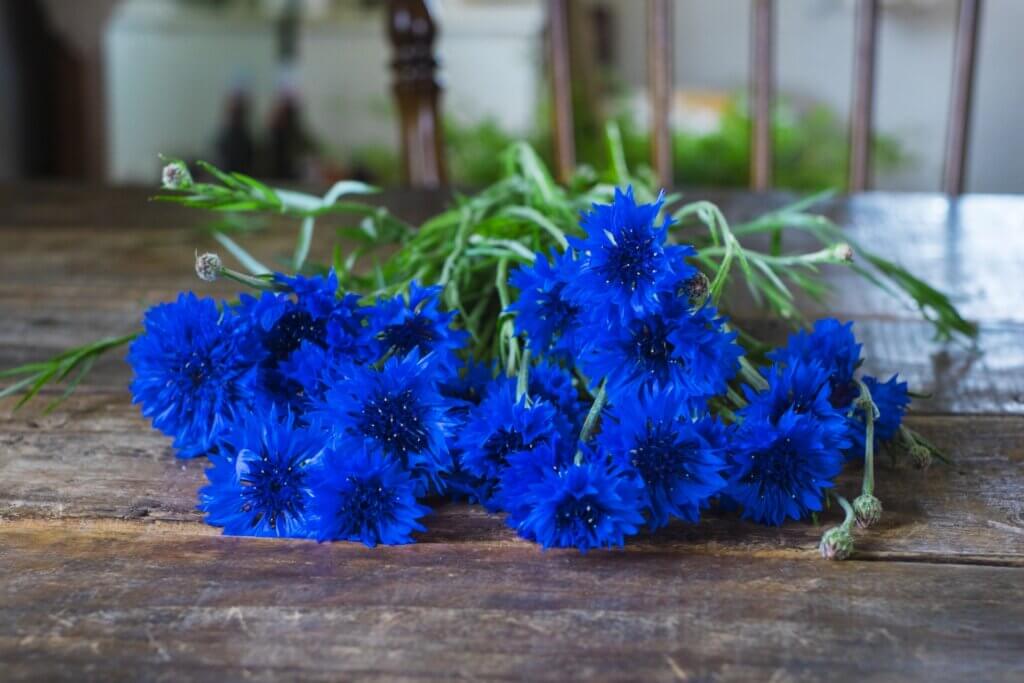
Sapphires come in a variety of colors, but the most highly regarded blue sapphire is the cornflower-colored sapphire from Kashmir.
The most distinctive feature of this sapphire is that the deep, strong blue color has a light whitish tint, as if covered by a veil, which is not the case with sapphires from other regions. The whiteness gives the deep blue color a gentle tint and makes it different from other sapphires, giving it an elegant color.
Cornflower blue sapphires gained increased attention and popularity at the beginning of the 20th century and are said to be the most traditional of all sapphire colors.
It was mined around 1880 at an altitude of 4,000 meters in Kashmir, located on the border between India and Pakistan northwest of the Himalayas, but now most of it has been mined out and the amount produced is quite small. Therefore, it is traded at a very high price due to its beauty as well as its scarcity.
Incidentally, the cornflower is also the national flower of Germany.
royal blue sapphire
The second most highly regarded blue sapphire after the cornflower blue is the royal blue-colored sapphire from Myanmar.
Royal blue sapphires are characterized by a deep blue color with a slight purple tinge, called "deep purple blue," and are untreated. This deep hue is found in large sapphires of 3 ct. or more.
Sapphires mined in the Mogok region of Myanmar tend to be large and inexpensive. Therefore, it can be said that large sapphires with dark colors are produced in the Mogok region, where they are mined more easily.
Mogok in Myanmar is also the source of high quality "pigeon blood" rubies. It is a region where good quality corundum can be easily mined.
And the name "Royal" is closely related to the "British Royal Family". We would like to introduce this in detail in the following section.
Starlight Star Sapphire
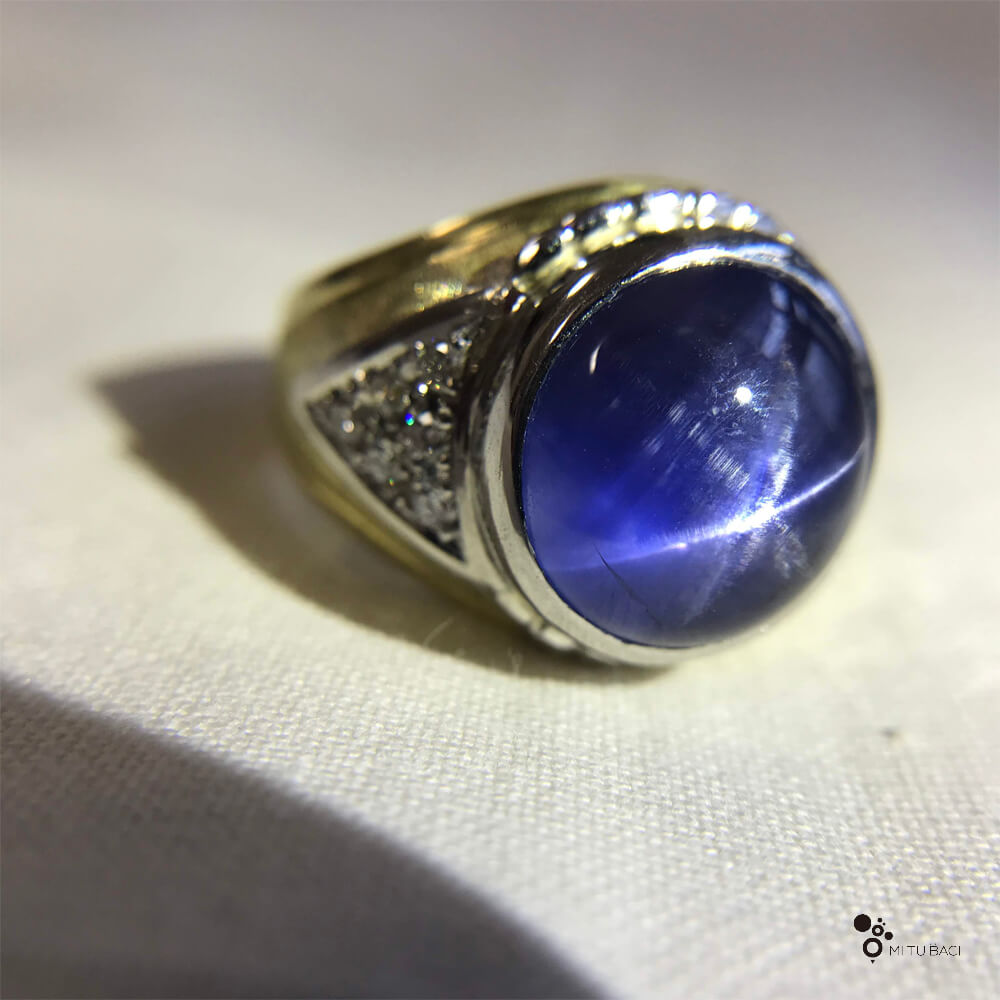
Some corundum stones produce a six-pointed star with white light extending in six directions when illuminated. This effect is called "asterism" in gemstone terminology. These polished corundum stones are called star sapphires if they are blue or gray in color, and star rubies if they are red.
The highly transparent stones are cut into "faceted cuts" (straight and flat cuts often seen in gemstones), and translucent stones with many fine needle-like crystals called silk (titanium dioxide) are cut into "cabochons" (curved dome-shaped cuts).
If you shine a light on the rutile so that it intersects at exactly 60 degrees, a six-pointed star appears on the surface of the cabochon-cut stone.
Because the star is too transparent to be seen, the areas of a star sapphire/ruby stone are usually not polished very cleanly. Also, because the priority is to bring out the star beautifully, exact cutting of the shape tends not to be pursued.
High-quality star sapphires/rubbies should have the star centered as beautifully as possible, and the gem's beautiful ground color is important.
Sapphire used to be considered the name for lapis lazuli.
Lapis lazuli, the birthstone for December, was called sapphire, meaning blue, from approximately B.C. to the 14th century. Lapis lazuli was also called ultramarine in Europe from the 5th century onward, and was treasured as a precious blue gem brought from distant foreign lands. Even today, indigo paint made from lapis lazuli is called ultramarine.
As modernization progressed, sapphire became the representative blue color because of the gem's strength, color, and transparency. It can be said that blue was so precious in those days.
Although the same name was once used for lapis lazuli, the mineral name is now "lazurite," which is a completely different stone from sapphire.
The world's most famous engagement ring
Sapphires have been worn by royalty for generations.
The deep blue of the sapphire is said to symbolize nobility, truth, honesty, and loyalty. It has adorned the robes of royalty and clergy for centuries.
The sapphire and diamond engagement ring given to Prince Charles on his engagement to Diana, Princess of Wales, in 1981, brought it to the forefront of the royal family's attention. It is still fresh in our minds that Prince William gave a similar engagement ring when he proposed to Catherine, Princess of Wales.
Going further back, in 1840, Duke Albert presented Queen Victoria with a brooch adorned with a large sapphire. The brooch has remained in the Queen's personal collection and still shines beautifully on her bosom on important occasions.
As recently as 2017, a ring clasped with a papalachian sapphire was used for the engagement ring of Princess Eugenie and her fiancé Jack, who is also a cousin of Prince William and Prince Henry.
Thus, for generations, the British royal family has highly valued jewelry made of sapphires.
Handcraft sparkling sapphire jewelry at the workshop
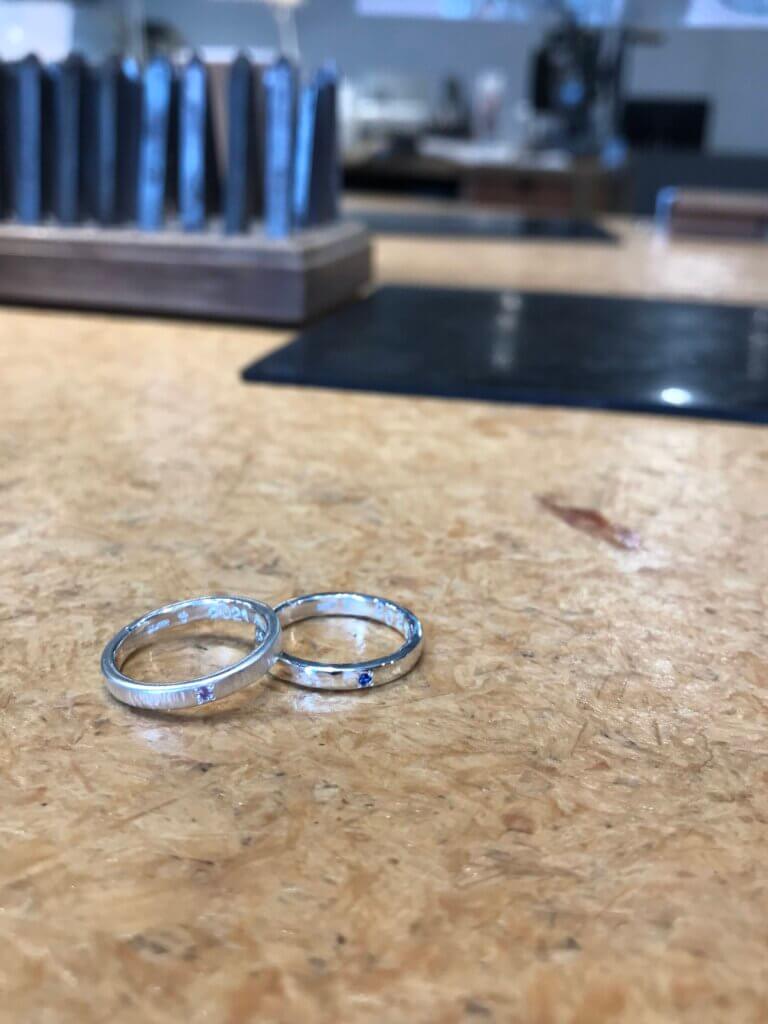
At MITUBACI, rings, pendants, and bangles made in workshops can also be fastened to wedding and engagement rings. In addition, birthstone rings carefully crafted by our artisans use large stones whose beauty can be strongly appreciated.
At MITUBACI, each natural sapphire is carefully fastened by our craftsmen who carefully assess the condition of each piece. We offer two types of sapphires, blue and pink, so you can choose the one you like best. It is also recommended to pair a sapphire ring with a different color.
The deep color of sapphire, created by nature, has attracted people from ancient times to the present day, and it is a favorite of the British royal family. Why don't you experience the charm of sapphires?
